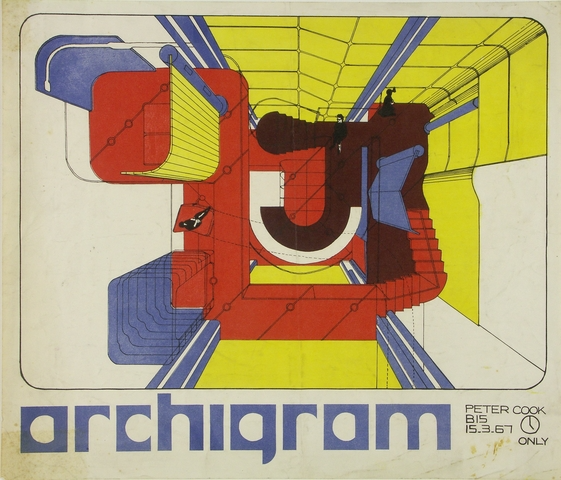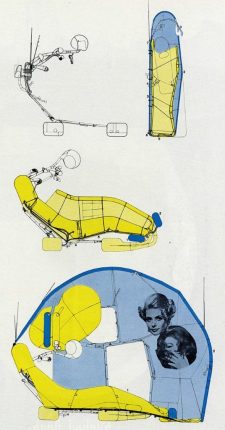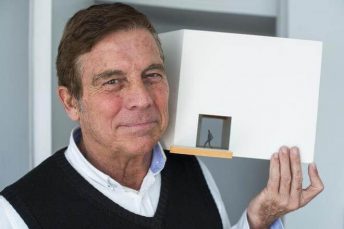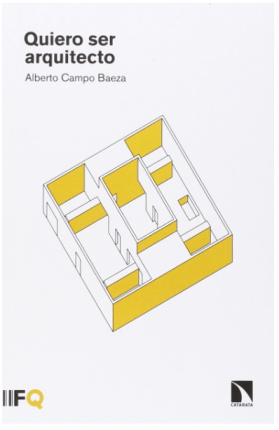PA-2 Opinions
ARCHIGRAM

Was an avant-garde architectural group formed in the 1960s that was neofuturistic, anti-heroic and pro-consumerist, drawing inspiration from technology in order to create a new reality that was solely expressed through hypothetical projects. Based at the Architectural Association in London, the main members of the group were Peter Cook, Warren Chalk, Ron Herron, Dennis Crompton, Michael Webb and David Greene. The pamphlet Archigram I was printed in 1961 to proclaim their ideas. Committed to a ‘high tech’, light weight, infra-structural approach that was focused towards survival technology, the group experimented with modular technology, mobility through the environment, space capsules and mass-consumer imagery.
Archigram agitated to prevent modernism from becoming a sterile and safe orthodoxy by its adherents. Unlike ephemeralisation from Buckminster Fuller which assumes more must be done with less material , Archigram relies on a future of interminable resources. The works of Archigram had a neofuturistic slant being influenced by Antonio Sant’Elia’s works. Buckminster Fuller and Yona Friedman were also important sources of inspiration.
The works of Archigram served as a source of inspiration for later works such as the High tech ‘Pompidou centre’ 1971 by Richard Rogers and Renzo Piano, early Norman Foster works, Gianfranco Franchini and Future Systems.

Their architectural ideas turned around a premise: «people are walking architectures.» Therefore, architecture had to enhance people’s ability to move and adapt to their changing needs. Many of their works, unviable at the time, are inspired by the space race: habitable modules, self-sufficient suits, large mobile infrastructures inspired by space shuttles or portable cities. So that users could install and access basic services such as electricity or water, they devised invisible infrastructures to connect to.
In my opinion this group was too advanced for its time. Before, maybe they thought they were either crazy or that they were geniuses for thinking those things. Even today they would think the same but there would also be a middle ground between genius and madness.
For me they were geniuses who thought further in the future, people who weren´t satisfied just by sitting in their studies doing their work, but at the same time wanted to travel and not waste the time we have on this earth. Even today we haven´t found a method to do this, even though we are so advanced.
bibliography

Reflection – I want to be an architect
This text «Quiero ser un arquitecto» written by Alberto Campo Baeza a famous Spanish architect, talks about the W questions that you need to know to become a «good» Architect. It is true that to be an architect you have to study hard to get in the best university you can, and that with more knowledge you get to grow higher than the people that just know the basics. Furthermore, he points out the importance of some subjects, especially of Projects, which is the heart of the degree. He gives some tips which will come in handy once you start your degree. Apart from this, he recommends some books and talks about the future careers you can apply after finishing your degree.

This book is more than what people see in the outside; it describes all the pieces of architecture in an easy way to understand. And it gives you answers to things you could not respond. There is something that the author said that stayed in my mind:
“Es la profesión más hermosa del mundo: crear, casi como un Dios” what he meant is that this profession or better said this vocation is the most beautiful in this world is like being god. And I agree completely with him although we are limited by external things so we cannot be gods. If I read this book before entering architecture, it would have made all my doubts go away. Now I know that this career is what I want, and I am pretty sure I will be good at it. Maybe I am wrong, but right now I am confident in myself.
